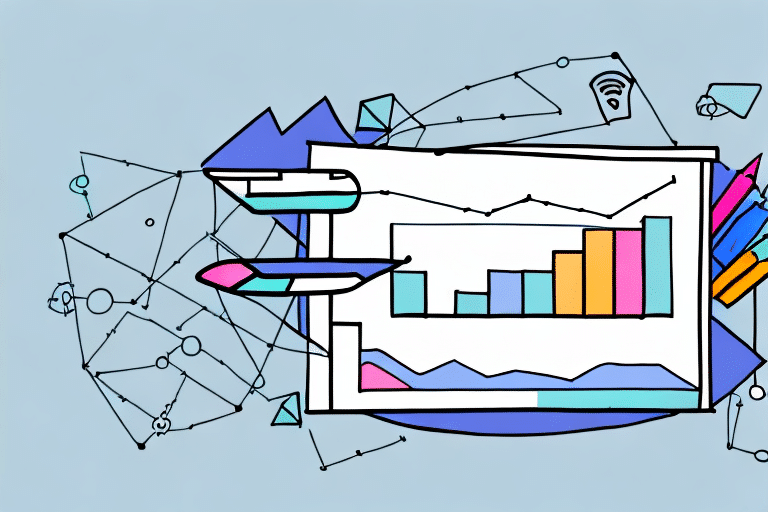Understanding the Essential Customer Retention Metrics
In today's competitive business landscape, customer retention has emerged as a cornerstone of long-term success. While attracting new customers is vital, retaining existing ones is equally, if not more, important. By focusing on customer retention, businesses can build lasting relationships, enhance brand loyalty, and significantly boost profitability. This article delves into the crucial metrics that drive customer retention and explores strategies to optimize these metrics for sustained growth.
Importance of Customer Retention for Business Success
Customer retention is pivotal for several reasons:
- Cost Efficiency: Acquiring new customers can be up to five times more expensive than retaining existing ones. According to a study by Harvard Business Review, increasing customer retention rates by 5% can boost profits by 25% to 95%.
- Revenue Growth: Repeat customers tend to spend more over time. They also serve as brand advocates, referring new customers through word-of-mouth.
- Brand Loyalty: Consistently satisfying existing customers builds trust and loyalty, leading to a strong market reputation.
Building Brand Loyalty
When customers feel valued and appreciated, their loyalty to your brand intensifies. This not only ensures a steady revenue stream but also enhances your brand's reputation in the marketplace.
Reducing Marketing Costs
A loyal customer base diminishes the need for extensive advertising and promotional efforts. Instead, resources can be allocated to improving customer service and deepening existing relationships.
Understanding Customer Retention Metrics
To effectively manage customer retention, businesses must track and analyze specific metrics. These metrics provide insights into customer behavior, satisfaction, and the overall health of customer relationships.
Customer Retention Rate
The customer retention rate measures the percentage of customers who continue to do business with a company over a specific period. The formula is:
Customer Retention Rate = ((CE - CN) / CS) × 100
- CE: Customers at the end of the period
- CN: New customers acquired during the period
- CS: Customers at the start of the period
Tracking this metric helps businesses gauge customer loyalty and the effectiveness of retention strategies.
Churn Rate
Churn rate indicates the percentage of customers who discontinue their relationship with a company within a given timeframe. A high churn rate may signal underlying issues such as customer dissatisfaction or better offerings from competitors.
Customer Lifetime Value (CLV)
CLV estimates the total revenue a business can expect from a single customer account over the customer's lifetime. Understanding CLV helps businesses prioritize high-value customers and tailor marketing efforts accordingly.
Tools like RFM Analysis and cohort analysis are instrumental in calculating and interpreting CLV.
Strategies to Enhance Customer Loyalty and Retention
Implementing effective strategies is essential to improve customer loyalty and retention. Below are proven tactics that businesses can adopt:
Personalization
Tailoring experiences to individual customer needs fosters a deeper connection. Personalized recommendations, customized promotions, and targeted communications make customers feel valued.
Excellent Customer Service
Providing prompt, efficient, and empathetic customer service can significantly enhance customer satisfaction and loyalty.
Loyalty Programs
Rewarding customers for their repeat business through loyalty programs encourages continued patronage and increases CLV.
Targeted Communications
Using data-driven insights to send relevant and timely communications keeps customers engaged and informed about products or services that matter to them.
Seeking and Responding to Feedback
Actively soliciting customer feedback and making tangible improvements based on that feedback demonstrates a commitment to customer satisfaction.
Analyzing Customer Feedback and Data
Customer feedback is a goldmine of insights that can drive retention strategies. Effective analysis involves categorizing feedback, identifying trends, and prioritizing issues.
Categorizing Feedback
Organizing feedback into themes or topics helps in pinpointing common issues or areas needing improvement. For instance, frequent complaints about long wait times may indicate a need to enhance customer service efficiency.
Prioritizing Critical Issues
Not all feedback holds equal weight. Prioritize issues based on their frequency and impact on customer satisfaction to address the most pressing concerns first.
Data-Driven Approach
Utilizing customer analytics software and predictive modeling tools can uncover patterns and trends in customer behavior, enabling more informed retention strategies.
For more on data-driven retention strategies, refer to Forbes: Using Data to Improve Customer Retention.
Measuring the ROI of Retention Efforts
Evaluating the return on investment (ROI) of retention strategies is crucial to ensure they align with business goals and deliver value.
Calculating ROI
ROI can be measured by comparing the costs associated with retention efforts against the revenue generated from repeat business. The formula is:
ROI = (Net Profit from Retention Efforts / Cost of Retention Efforts) × 100
Continuous Monitoring and Adjustment
Retention strategies should be regularly reviewed and adjusted based on their performance and evolving customer needs to maintain effectiveness.
Case Studies and Best Practices
Studying successful retention strategies from industry leaders can provide valuable insights. Analyzing these case studies helps businesses identify best practices and innovative approaches to customer retention.
Explore examples in Inc.: Customer Retention Case Studies.
Conclusion
Understanding and leveraging essential customer retention metrics is vital for any business aiming for long-term success. By tracking key metrics like retention rate, churn rate, and CLV, and implementing effective strategies such as personalization and excellent customer service, businesses can enhance customer loyalty and drive profitability. Additionally, a data-driven approach to analyzing customer feedback and measuring ROI ensures that retention efforts are both effective and aligned with business objectives. Emphasizing customer retention not only sustains revenue but also fosters a loyal customer base that can propel a business forward in a competitive market.




















